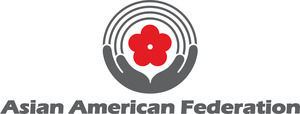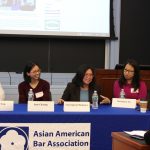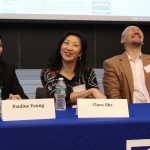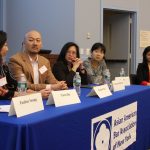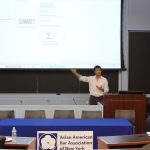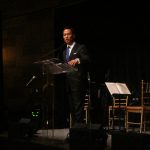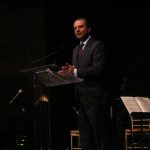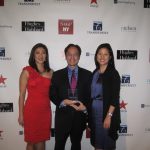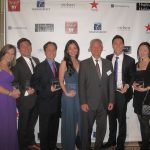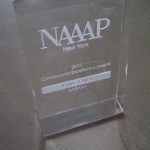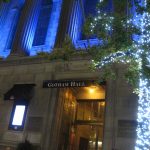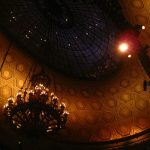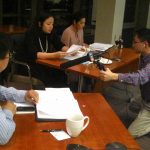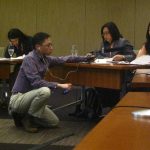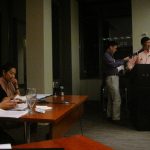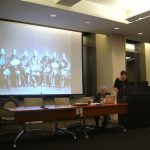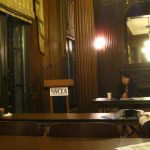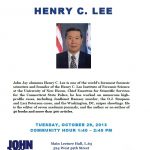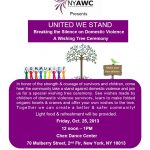(212) 344-5878, x217
New York State Senate and Assembly Districts Highlight
the Growth and Diversity of Asian New Yorkers
According to Asian Americans of the Empire State: Growing Diversity and Common Needs, published by the Asian American Federation earlier this year, New York State is home to the second largest population of Asian Americans. “While the fastest population growth and the newest communities are in the upstate region, most Asian American New Yorkers live in the New York City metro area,” said Howard Shih, Census Programs Director at the Federation. “The Asian American community is culturally and economically diverse.
Some of the key highlights from the briefing papers are:
- For the first time, one State Senate district is majority Asian.
- Three Assembly Districts are now majority Asian, up from only one in 2002.
- Chinese is the most spoken language other than English in 5 Assembly Districts and 3 Senate Districts. Korean is the most spoken language other than English in one Assembly District (District 26).
- The second most commonly spoken Asian language group consists of the languages of the fast-growing South Asian population.
According to the Assembly district briefing paper, District 40 in Flushing has the largest Asian population, followed by District 25 in Northeast Queens. In District 40, 64% of the population is Asian. “This briefing paper is a tool for elected leaders because it is so important to know what ethnic groups we are serving in our different Assembly districts, and base our services and communications on the needs of different groups. As the only Asian American elected to a state office and the prime sponsor of Data Disaggregation bill, data breakdowns like this enable the state leaders to provide better access to the services that our constituents deserve. I will personally be promoting this tool and sharing it with my colleagues in the New York State Assembly so that we can continue to have stronger connections with our state’s growing Asian American community,” said Assemblymember Ron Kim (D. 40).
“By providing information on the diverse and growing communities across the city and in individual districts, we move one step closer to making state government accessible to everyone it serves. I look forward to working with all the great groups serving the Asian American community to ensure even greater language access to public information,” said Assemblymember Nily Rozic, who represents District 25 which has over 67,000 Asians, or 54% of total population.
On the State Senate side, the district with the largest Asian population is District 16 in Flushing Queens, represented by Senator Toby Ann Stavisky. District 16 has over 176,000 Asians, making the district 55% Asian. “This paper by the Federation highlights one of the most fascinating parts of my district—our incredible culture of diversity and inclusion. I am glad that New Yorkers of all backgrounds, from the Chinese population in Flushing to the South Asian population in Jackson Heights and the Korean population in Murray Hill have decided to call Queens home. I remain committed to ensuring that my constituents have in-language assistance to services, civic participation access, and other opportunities to have a stronger voice in their community. This insightful research helps me better understand and better serve all of the people of the 16th district,” said Senator Stavisky.
District 11 had the second largest Asian population, with over 1 in 3 residents who are Asian. The third largest Asian population is District 26, which encompasses Lower Manhattan’s Chinatown. 24% of the population in District 26 is Asian. Upon review of the briefing paper, Senator Daniel Squadron remarked, “As New York’s Asian American population continues to grow, it’s critical that the community has real partners and a real voice in government. This report only underscores how important that partnership is, on everything from language access in education and government to protecting small businesses.”
“In a few months, the 2014 election cycle for state offices will begin. We hope these briefing papers are tools for elected leaders to reach out and engage the Asian Americans living in their districts. Oftentimes, outreach to our community is overlooked, but having tools like these that show the breakdowns of the top languages in New York City’s state assembly and senate districts, as well as the disaggregation by the top 19 Asian languages spoken in each district, will better equip our leaders to engage residents. In turn, these papers will facilitate community leaders and advocates to show that our civic voice is growing and that we need to better connect with our elected officials to offer our expertise, ask for help and support,” said Cao K. O, executive director of the Federation.
http://www.aafederation.org/cic/briefs/NYCAssembly2012.pdf
###


